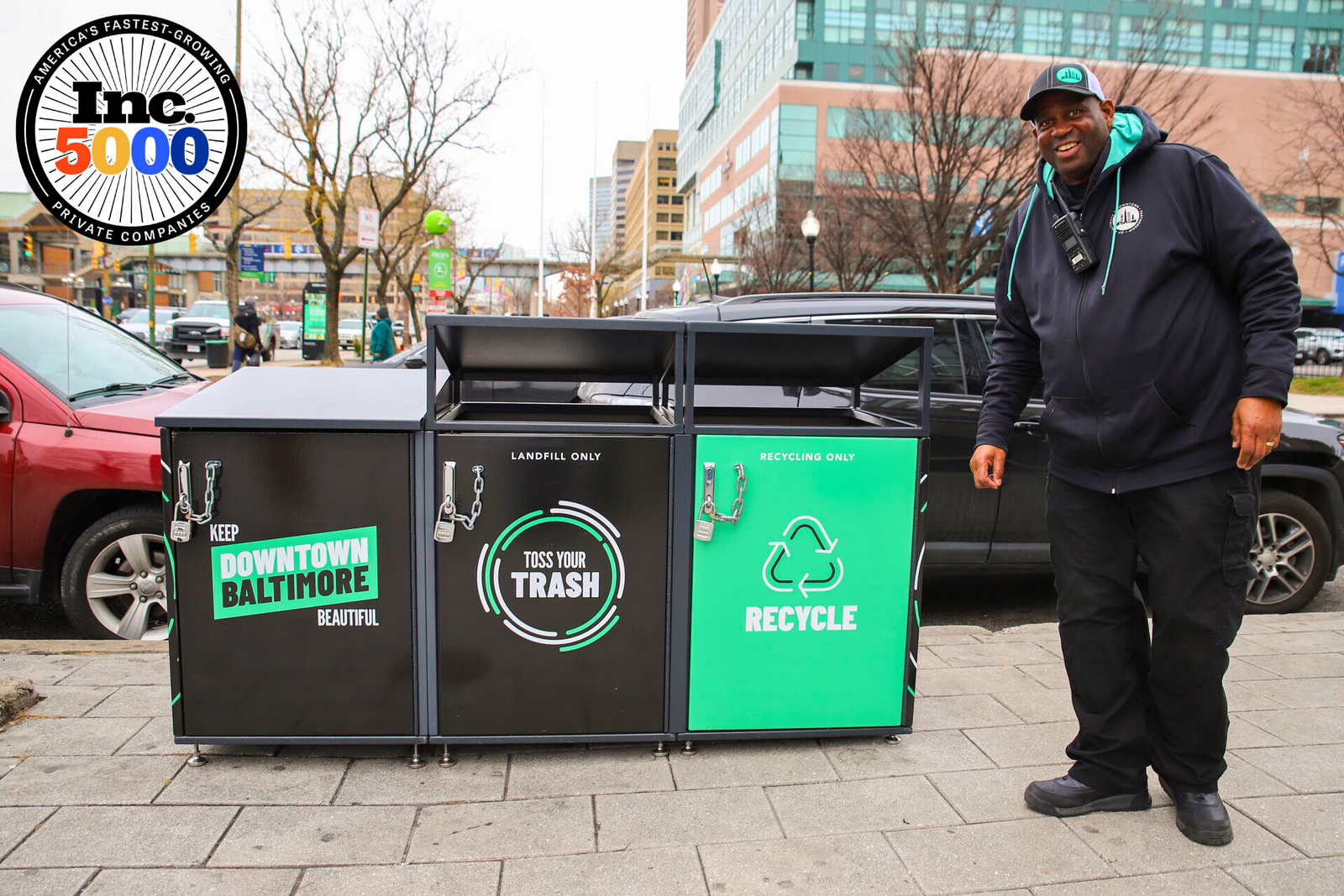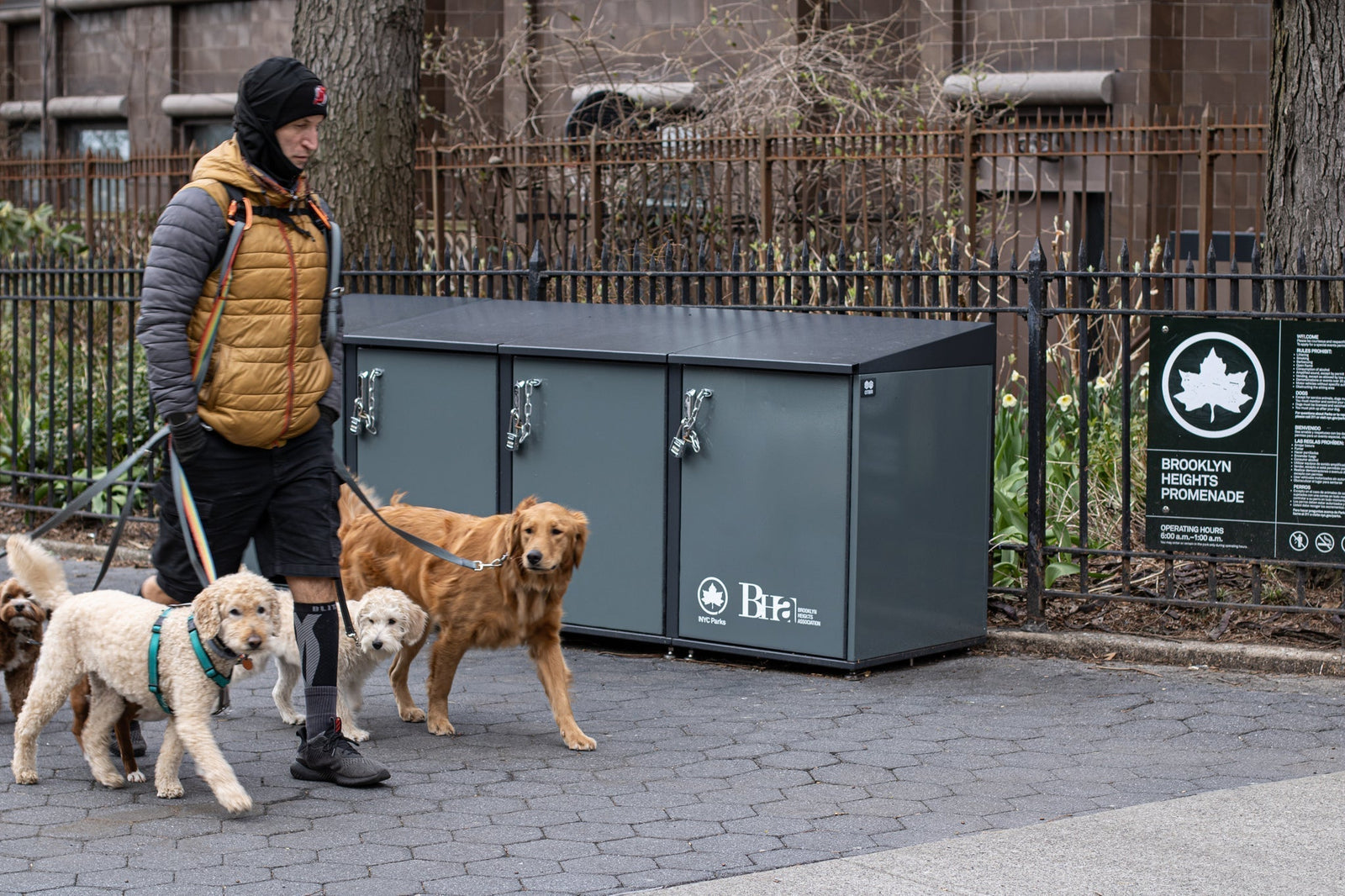Any innovative new product is prone to bumps and dings in the development process. The early days of CITIBIN were no different. In developing premium outdoor furniture products like our trash enclosures, ParcelBin, and ParcelDrop (discontinued), literally thousands of decisions had to be made—including how to prevent literal bumps and dings. Not every call was the right one on the first try. "We made a couple of the big kind of mistakes along the way," says CITIBIN founder and CEO Liz Picarazzi. Here, she explains how mistakes led to product improvements and innovative new offerings. Read on to find out more.

Mistake: "The first big one mistake is that our first trash enclosures were not rat-proof," says Picarazzi. "We didn't claim that they were, but when we started putting product out there, we realized that people really expected it to be rat-proof."
Solution: Through a series of iterations, CITIBIN's trash enclosures evolved into fully enclosed cabinets constructed from sheet aluminum. Every angle is welded closed, rebuffing New York City rats at literally every turn. "We learned that you really can't make a legitimate trash enclosure unless it's rat-proof—we're not going to be helping New Yorkers and property managers unless we can solve that problem," says Picarazzi. "It was an insight that became foundational to our product."
(And here's some video proof.)

Mistake: CIBITIN products were originally outfitted with zinc hardware. But they rusted.
Solution: "All hardware — whether it's screws, latches, handles, hinges, feet — if you don't go with stainless steel, those are going to rust, no matter what," says Picarazzi. CITIBIN had a brief dalliance with zinc accessories before switching to stainless steel. "We know we're never going to make that mistake again," laughs Picarazzi. But the average trash enclosure manufacturer "is definitely going to buy zinc, and they won't be attractive or very functional," she adds. "If it's rusty or you don't want to touch it, that doesn't work. A lot can go wrong with hardware, and much of the cost in these products is hardware. Overall, getting our hardware game right was super-important."

Mistake: Originally, CITIBIN experimented with different cladding materials for product exteriors. Originally, enclosures were built with Trex, a composite decking material. Unnecessarily thick and heavy, it caused hinges to stretch. The next option, Hardie cement board, was difficult to work with and prone to chipping.
Solution: The ultimate winner was Cali bamboo, a composite of recycled plastic and bamboo used in decking. Light but sturdy, it was available in versatile and stylish colors.
"CITIBIN is a one-and-done product—we don't want someone to have to replace it every few years," says Picarazzi. "This material we found was just ideal. It solved the functional design need, and it's very attractive. The colors are tones of brown and black that work really well—customers want something that's going to blend in with their architecture. Most trash enclosures don't fit in at all. So we were really happy to find this material."

Mistake: CITIBIN's trash enclosures can be customized with a built-in planter, easily adding beauty and variety to your property. But in the first iteration, "We didn't really think about irrigation of the planter on top of the trash enclosure," laughs Picarazzi. "It took a couple of customers telling us that water was getting into their trash for us to realize, we need to rethink this."
Solution: "From not knowing anything about drainage, we needed to figure out how to design the enclosure tops, especially from a prefab perspective," she adds. "It's an important consideration—if you're going to put a planter on top of something, how do you keep it from leaking?" Some careful design changes ensure that water stays where it belongs, resulting in grateful plants and owners.
Want to know more? Learn more about our products here, or ask us a question in the chat window at right!
Get a FREE Estimate

